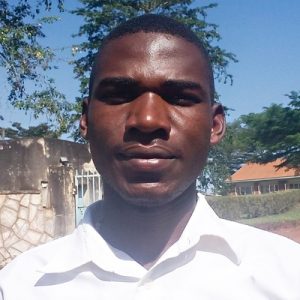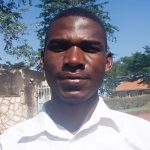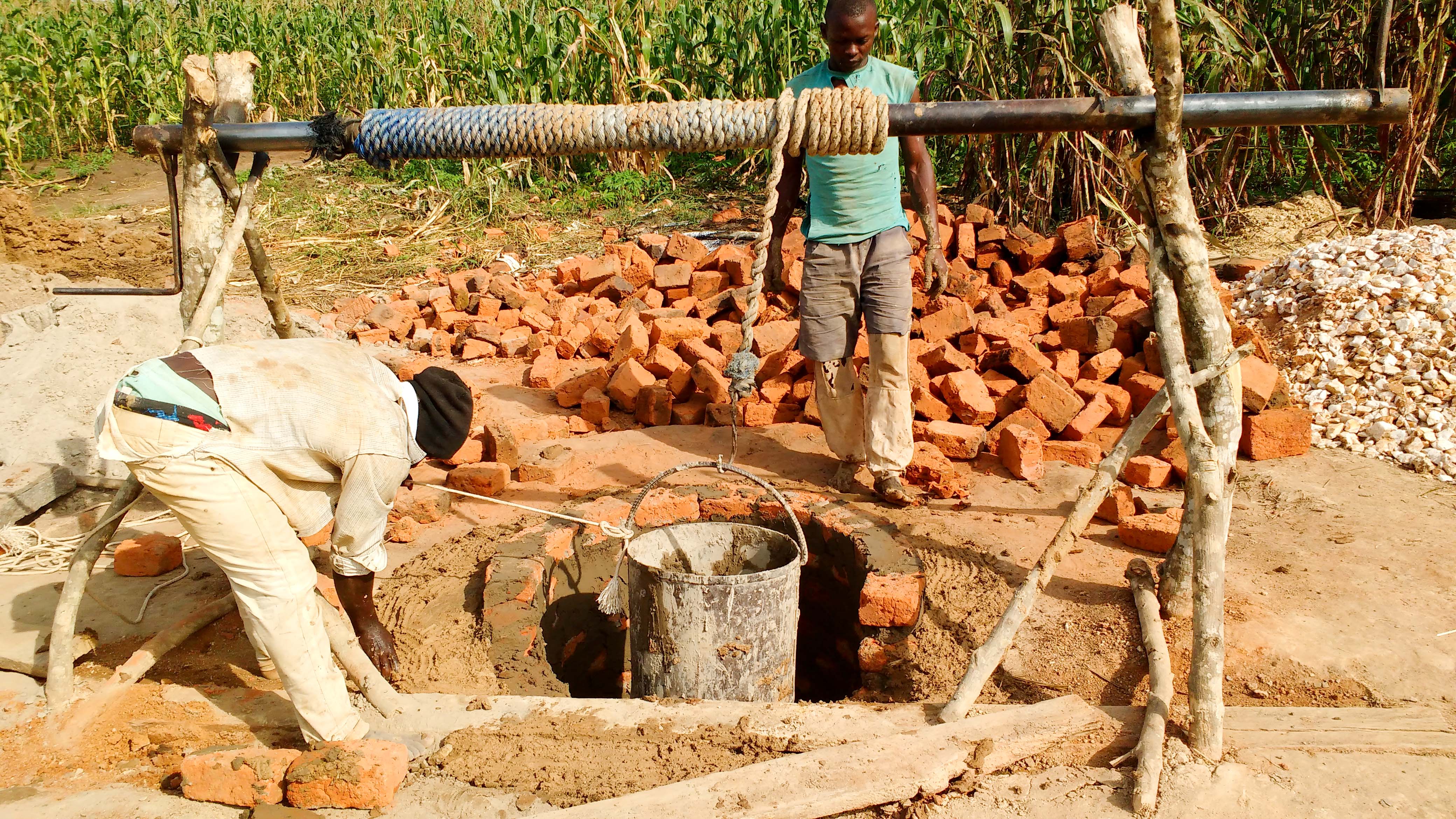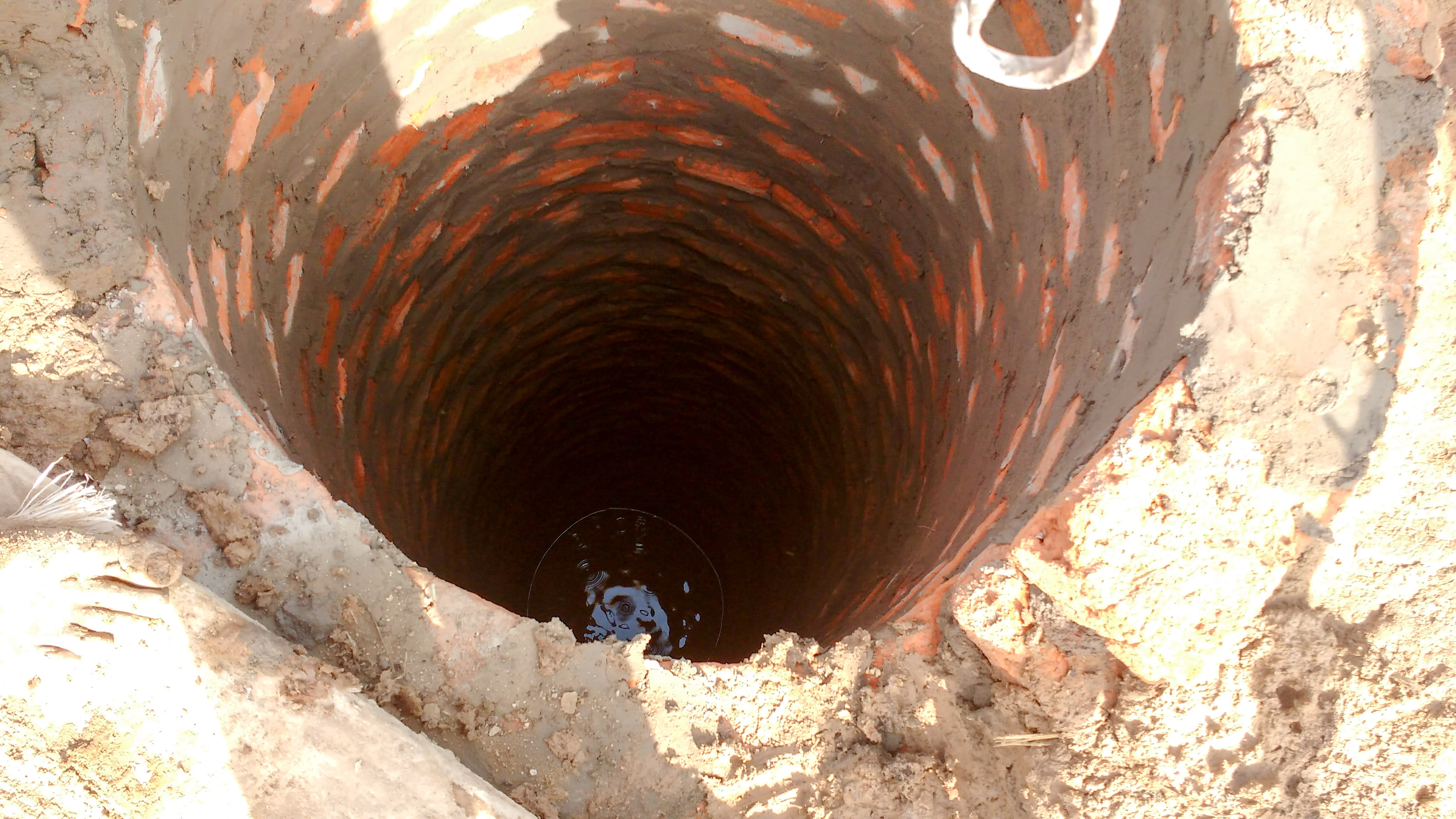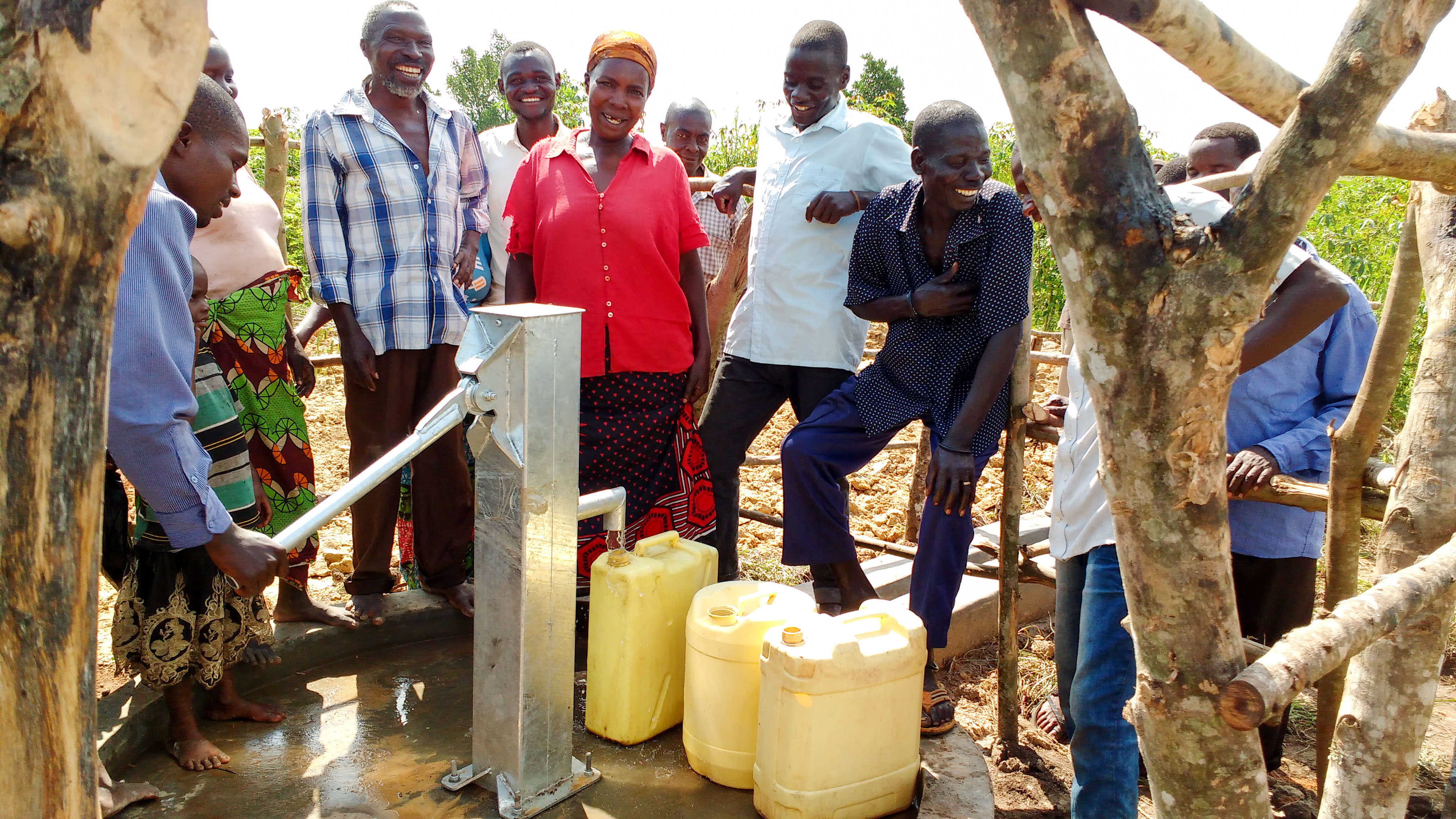People in parts of Alimugonza Community travel up to a mile to access water from an unsafe, open source. The water is gathered in plastic jerricans and used for drinking, washing, and cooking.
Surface runoff from nearby farms contaminates the water, putting community members at high risk of contracting waterborne diseases.
"I am 68 years old," Mr. Bodongo Kasaino said
"All these years we have been taking water from this unprotected well. As a result, we faced many challenges. My child died due to acute diarrhea. My neighbor's child narrowly survived drowning in the well and typhoid is rampant in our village due to this unsafe water."
More than half of households have pit latrines which mean open defecation is still an issue in this community. There is some knowledge in the community about improved hygiene and sanitation from training conducted 5 years ago.
Most people here are peasant farmers. It is the rainy season in Masindi and this is the time when people are mostly planting their crops. During this season they go to gardens and return home around midday. They rest and eat lunch with their children who come back home from school.
Thereafter some go back to the garden to work until late in the evening. The men tend to go for social activities while women remain home for household chores. The men come back later to eat dinner and sleep.
Here’s what we’re going to do about it:
Training
Training’s main objectives are the use of latrines and observing proper hygiene practices since these goals are inherently connected to the provision of clean water. Open defecation, water storage in unclean containers and the absence of hand-washing are all possible contaminants of a household water supply. Each participating village must achieve Open Defecation Free status (defined by one latrine per household), prior to the pump installation for a shallow hand-dug well.
This social program includes the assignment of one Community Development Officer (CDO) to each village. The CDO encourages each household to build an ideal homestead that includes: a latrine, hand-washing facility, a separate structure for animals, rubbish pit and drying rack for dishes.
We also implement the Community Led Total Sanitation (CLTS) approach with each of our village partners. This aims to improve the sanitation and hygiene practices and behaviors of a village. During these sessions, village leaders naturally emerge and push the community to realize that the current practices of individual households – particularly the practice of open defecation– are not only unhealthy but affect the entire village. CLTS facilitates a process in which community members realize the negative consequences of their current water, sanitation and hygiene behaviors and are inspired to take action. Group interactions are frequent motivators for individual households to build latrines, use the latrines and demand that other households do the same.
New Hand-Dug Well
With the guidance of our artisans and mechanics, the excavated well will be cased, sealed with a well pad, and then finished with a new AfriDev pump. The community will participate in excavating and constructing the water source.
Excavation takes a month or more on average, depending on the nature of the rock beneath. Construction of the well lining and installation of the pump takes on average 12 days.
This well will be located in Katugo Community and will bring clean water closer to families having to walk long distances for their water.
We are also constructing one more hand-dug well and rehabilitating two existing wells for the community to ensure everyone has access to safe water! Learn more here and here.
Note: We do not have the precise GPS coordinates for this project at this time, but will update as soon as possible.
Improved Sanitation
The aim is that all households own an improved latrine. Many households do not use a latrine but use the bush. Due to open defecation, feces are spread all over the village. This leads to waterborne diseases and contamination of groundwater and surface water. Our aim is that the community is able to live a healthy life free of preventable diseases. We endeavor that at the end of our presence in the community, people will have both access to sustainable, clean water and access to sanitation. We have now organized families to form digging groups for latrine construction, and empowered them with tools to use.



 Rehabilitation Project
Rehabilitation Project






